10 Underrated Trees That Deserve More Love in Our Landscapes
These underrated trees offer a ton of beauty, adaptability, and wildlife value.
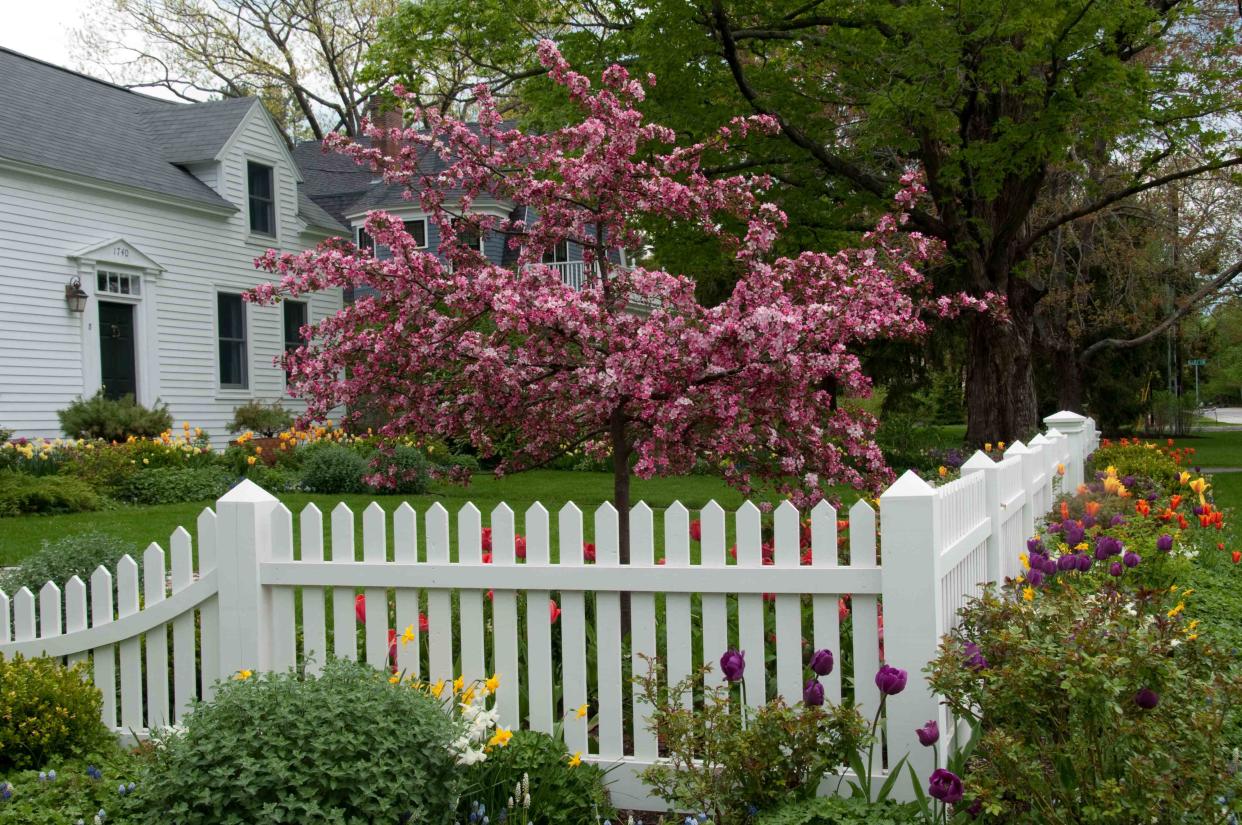
Lynn Karlin
The recent decimation of our native ash trees because of a tiny insect proves that everyone planting the same type of tree, yard after yard, is not a smart idea. Not only that, but when you play “follow the leader,” you miss out on the chance to plant something unique. A diverse plant selection adds visual interest (and benefits wildlife, too!). Here are 10 trees that deserve more consideration in the home landscape because of their beauty, adaptability, and wildlife value, according to an expert.
Nancy Buley is the director of communications at J. Frank Schmidt & Son Co. in Boring, Oregon.
Amur Maackia
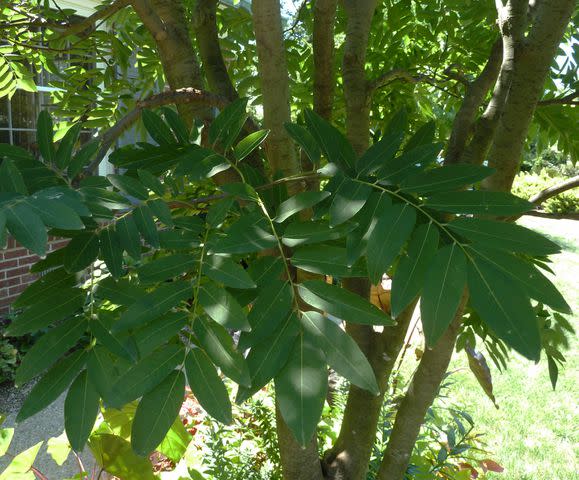
Denny Schrock
Amur maackia (Maackia amurensis) is “a great tree with a challenging name,” says Nancy Buley, director of communications at J. Frank Schmidt & Son Co., a wholesale tree grower in Boring, Oregon. “It blooms in mid-summer when few other trees are in bloom and is an absolute pollinator magnet.”
Amur maackia has a vase shape with rounded crown. The compound leaves lend a fine-textured and airy appearance to the tree and the upright habit takes well to pruning and can be limbed up for added clearance in tight spots.
Moreover, Amur maackia creates its own nitrogen in the roots so it can tolerate poor soils, including those with high or low pH. “It’s a good choice for those in search of a small, tough, adaptable shade tree,” Buley adds.
Height: 25 feet
Width: 20 feet
Hardiness: Zones 3-8
American Persimmon
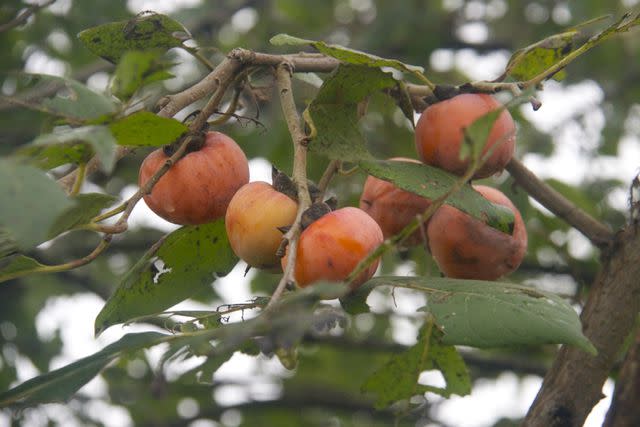
While you’re not likely to find this tree at your local big box store, this tough, adaptable tree is worth looking for. American persimmon (Diospyros virginiana) can be grown as a fruit tree in a home landscape or as a wildlife magnet in naturalized areas if you have a male and a female tree for pollination. Or grow a single fruitless specimen just to enjoy the alligator-hide bark and the pretty fall color, which ranges from soft yellow to reddish orange.
The botanical name, Diospyros, means “fruit of the gods” and the title is fitting as long as you wait till a hard frost to sample the late-maturing fruit. Otherwise, the oblong fruit are astringent enough to make your mouth pucker.
Height: 30-80 feet
Width: 20-35 feet
Hardiness: Zones 4-9
Tips
Look for less common tree species from online nurseries, which often cost-effectively ship them as dormant, bare-root trees.
American Hop-hornbeam
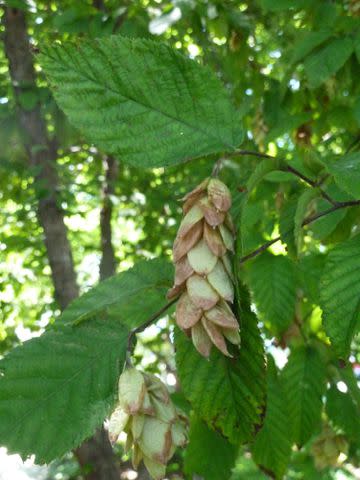
Denny Schrock
American hop-hornbeam (Ostrya virginiana) "is a very adaptable North American native that makes an attractive medium-size shade tree,” Buley says. Resistant to pests and tolerant of drought and alkaline soils, it is a solid workhorse for tough conditions. Hop-hornbeam features an upright, oval habit and dark green leaves that turn yellow in fall. But it’s the hop-like fruits that catch the eye and give the tree its common name. “The ‘hops’ are very handsome and ornamental,” Buley says, “and good conversation starters for those who enjoy hoppy beer!”
Height: 40 feet
Width: 25 feet
Hardiness: Zones 3-9
Black Cherry
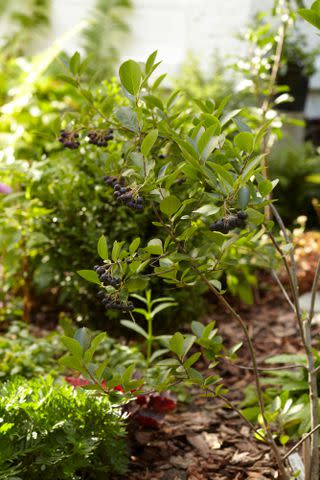
Karla Conrad
Black cherry isn’t just a great ice cream flavor, it’s a great tree! For starters, black cherry trees (Prunus serotina) are fast growing—2 to 4 feet per year. They also have fragrant white flowers in spring, glossy green leaves in summer, and yellow-orange foliage in fall.
Red fruits appear in fall, turning purple-black as they ripen. Birds eat the fruits, and later deposit the pits with a bit of fertilizer, so you never know where the next generation will pop up. The seedlings yank out easily—that is, unless you want more of this tree around for free.
Height: 50-80 feet
Width: 25-40 feet
Hardiness: Zones 3-9
Related: 10 Flowering Trees and Shrubs for Spring Landscaping
Chinkapin Oak
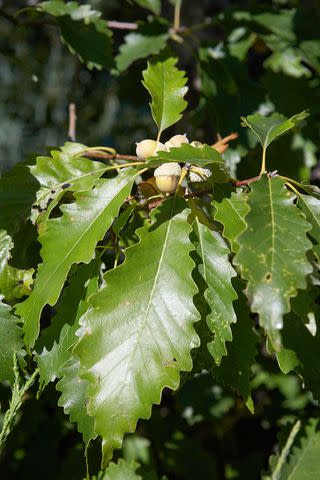
Dean Schoeppner
Chinkapin oak (Quercus muhlenbergii) is relatively fast growing for an oak—up to 2 feet per year—and offers chestnut-like leaves that are glossy yellow green on top but lighter colored below, giving them added contrast and appeal when the wind blows. In fall, those leaves turn a mix of yellow, bronze, and brown. The tree also tolerates alkaline soils, so it won’t turn a sickly lime green like pin oak tends to do in those conditions.
This oak produces acorns, but they’re not a housekeeping issue because squirrels and other wildlife love them. Chinkapin oak isn't as common in garden centers as pin, red, and swamp white oaks, but is definitely worth considering.
Height: 50-80 feet
Width: 50-70 feet
Hardiness: Zones 3-9
Flowering Crabapple
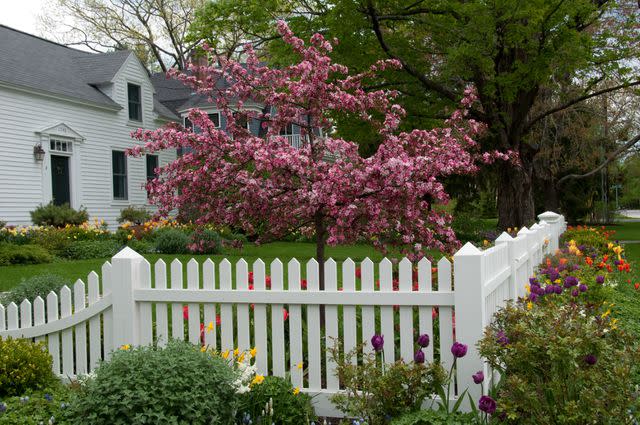
Lynn Karlin
Those who grew up with crabapples (Malus spp.) that offered little more than a fleeting display of flowers in spring may be in for a surprise. This old standby has been reinvigorated with new introductions that please on a number of levels.
“What’s not to like about the modern cultivars and a number of species that have withstood the test of time?” Buley says. “They check off all the boxes: small shade trees that are a good fit for today’s scaled-down home landscapes; various forms including columnar for narrow spaces and topiary forms for a formal look; long-lived, tough and adaptable; the blooms attract and support pollinators; the fruit attracts birds and wildlife.”
There are also cultivars with burgundy foliage, purple flowers, and brightly colored yellow, orange, or red fruit that stands out rather than blends in like the fruit on older crabapples.
Height: 5-25 feet, depending on cultivar
Width: 6-25 feet, depending on cultivar
Hardiness: Zones 4-8
Related: 13 Crabapple Trees That Add Stunning Color to Your Landscape
‘Frontier’ Elm
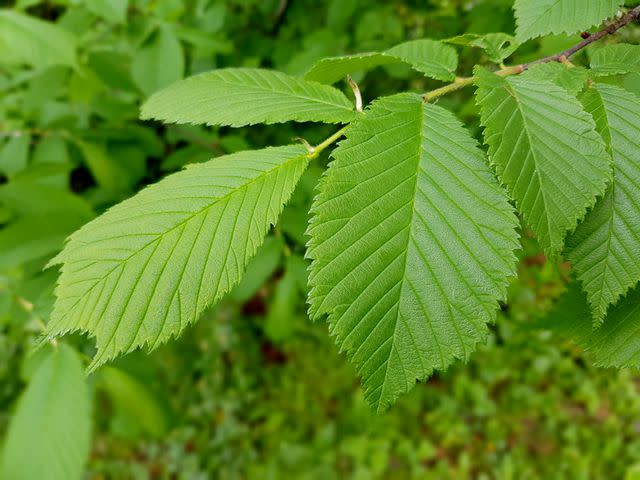
emer1940 / Getty Images
Before Dutch Elm Disease (DED) took off in the mid-20th century, elms were the tree of choice for city planners and homeowners alike. They’re experiencing a bit of a comeback with a number of disease-resistant selections like ‘Frontier’ (Ulmus minor x Ulmus parvifolia), a hybrid elm introduced by the U.S. National Arboretum.
“It is a relatively small elm with small leaves, bright red fall color, and it’s very adaptable across the country,” says Buley. Along with being DED-resistant, ‘Frontier’ is also highly tolerant of elm yellows disease, another nemesis of elm trees. It rarely flowers so it is virtually seedless.
Height: 25 feet
Width: 15 feet
Hardiness: Zones 4-10
Kentucky Coffee Tree
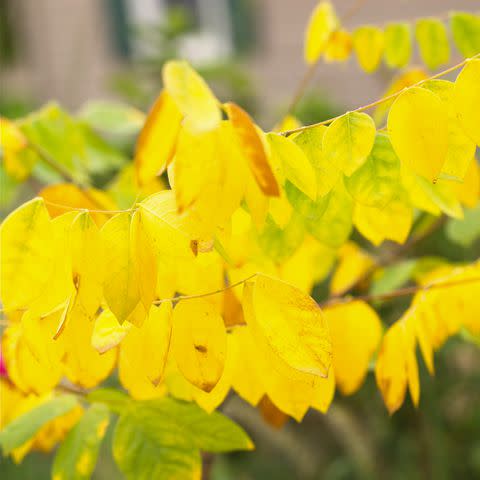
This species is catching on with parks departments looking to replace dying ash trees. Like ash trees, Kentucky coffee trees (Gymnocladus dioicus) are tolerant of pollution and a range of soils. They’re also relatively fast-growing trees, have decent yellow fall color, and offer winter interest with brown, leathery seedpods and a stark silhouette made dramatic by the absence of twiggy growth.
Newer introductions of Kentucky coffee tree have different sizes and habits and the male cultivars are without the seedpods that some object to when they drop in spring. These seedless male cultivars, slightly less winter hardy than the species (Zone 4), include 'Espresso-JFS' that's “faster growing and branches better at an earlier age than the others,” Buley says; and 'Skinny Latte', which is a "very narrow selection valuable for small residential lots, narrow streets, and parking lots,” she adds.
Height: 60-75 feet
Width: 40-50 feet
Hardiness: Zones 3-8
Osage Orange
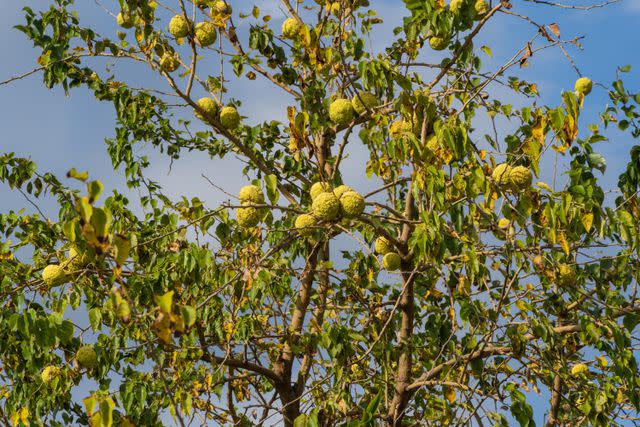
Alexander Denisenko / Getty Images
Osage orange (Maclura pomifera) puts up with a range of environmental stresses including heat, cold, and wind. No wonder that in times past, this tough tree was planted on farms and ranches as a thorny hedge to keep livestock in place. Also known as hedge apple, people loved its adaptability and tough-as-nails character, but the spines and grapefruit-sized fruit were not usually welcomed in home landscapes.
Today, there are thornless, fruitless male cultivars available, including two of the best performers, ‘White Shield’ and ‘Wichita’. Both are smaller than the species, topping out at 35 feet tall and wide, and slightly less winter hardy (Zone 5). Both cultivars have an upright growth habit, good branching, and extremely hard wood for a storm-resistant structure. “They’re an urban survivor on the street tree scene,” Buley says.
Height: 35-50 feet
Width: 35-50 feet
Hardiness: Zones 4-9
Paperbark Maple
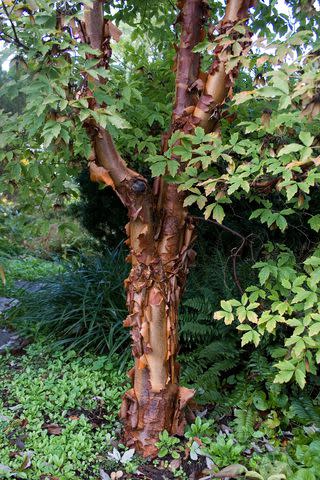
Paperbark maple (Acer griseum) has beautiful cinnamon-colored bark that peels much like paperbark birch. It also has bright red and orange fall color if not nipped by a hard freeze beforehand. In any case, this tree is a wonderful addition to the winter landscape (you’ll want to remove some of the lower branches as it grows so you can see more of the colorful bark). Its compact size and slow growth rate also make it suitable for smaller urban gardens.
Height: 25 feet
Width: 15-20 feet
Hardiness: Zones 5-8
Related: 15 Types of Maple Trees That Will Add Vibrant Color to Your Yard
For more Better Homes & Gardens news, make sure to sign up for our newsletter!
Read the original article on Better Homes & Gardens.
